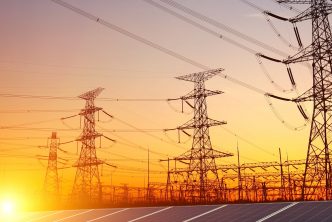The Essentials of Power Supply
Electricity is essential to experiencing a high living standard. The United Nations has recognised that energy is vital globally; hence the inclusion of ‘access to affordable, reliable, sustainable and modern energy’ as one of the pathways to global universal development.[1] Be it for jobs, security, climate change, food production or increasing incomes, access to energy for all is critical. From providing lighting to powering global industrialisation, in connectivity and even in medical services delivery, energy plays an important role. Presently, electricity is vital in ensuring improved living standards, and as such, access to electricity has evolved from being a privilege in the early 20th century to being taken as a fundamental right in many circles.
While the right to electricity is guaranteed for many, for others, it is not. In Sub-Saharan Africa, about 600 million people are without access to electricity[2]. Nigeria alone accounts for approximately 108 million[3]. Even when providing electricity access, supply is not assured. For those with an electricity connection, unreliable supply means that they are largely underserved for the most part. This unsatisfactory state of supply reflects the complexity of the nation’s electricity sector and its various challenges; from the decades of underinvestment in electricity infrastructure to unviable electricity servicing models that have influenced consumer behaviours and their perceptions of electricity supply.
In every sustainable electricity market, higher profit margin translates to increased development and growth. Despite the liberalisation of the electricity industry, it is still not clear to consumers and even the government if electricity should be considered a commodity (regulated only to ensure fair competition and appropriate reflection of the economic environment) or as a social service.
The level of liberalisation in any power sector is quite different in countries globally; ranging from very liberalised in Scandinavia and Western Europe, to countries like Nigeria where the distinction between commodity and social service is blurred. The result has been the enactment of policies by the government aimed at providing the social benefits of electricity at the detriment of private investment needed to ensure sustainable development.
Solution
Proposition of the solution
Changing the fortunes of the market requires the market to do what it ought to do since inception – behave like a marketplace.
In 2019, the Nigerian electricity industry had a market shortfall of ₦575.5 billion ($1.5 billion), of which the tariff shortfall was ₦574.3 billion ($1.49 billion).[4] The government is expected to cover this shortfall to the market. The provision of subsidy, especially to low income and vulnerable consumers, is a necessary responsibility of the state.
Electricity subsidy is typical in most countries, but Nigeria does not do this efficiently. The overarching non-cost reflective tariff regime employed provides a market-wide subsidy. This affects consumers that are often capable of and willing to pay the cost-reflective tariff, saddling them with unreliable supply and a low level of service from the DisCos.
Rationale of the solution
The Nigerian Electricity Regulatory Commission (NERC) has issued regulations aimed at providing respite for the market ‘the Willing Buyer, Willing Seller’ initiative. This initiative would see customers pay a higher tariff than that approved in the current multi-year tariff order (MYTO) for an increased level of service provision.
What is needed is a broader application of this initiative by DisCos across the country to increase market sustainability and commodify electricity.
Implementation of the solution
In a fully liberalised market, the tariff would be set by market forces while the regulator ensures competition and fair practices. While this is envisaged for the Nigerian market sometime in the future, an allowance could be made for DisCos and customers to enter into agreements presently. The current Willing Buyer, Willing Seller initiative tries to bypass the DisCOs by allowing customers to negotiate directly with the Generation Companies (GenCos).
DisCos are essential as the last mile electricity supplier to the customer. As the customer interfaces with the market, DisCos provide an easier path to ensuring agreements with any willing customer, and they help increase customer confidence. Another benefit is that it allows for a vital opportunity for overall improvement in service delivery by accustoming them to a higher electricity provision standard, one area/group of customers at a time.
This plan solves two of the current challenges facing the electricity sector; service delivery and liquidity crisis. Premium paying consumers would be assured constant supply based on their agreements with the DisCo. This incentivises the DisCos to increase their service level as they become liable for any unsupplied energy to consumers. At a tariff-rate that is cost-reflective, DisCos can work towards reducing the commercial and collection losses in the sector, improving overall liquidity and essentially providing a more efficient cross-subsidy regime. The generated revenue will provide funds needed to improve the grid infrastructure. In a nutshell, improved liquidity would help attract investment, enhance the performance of distributors and reinforce consumer confidence in the sector.
This plan will occur in two main phases; the preceding stage would incorporate the most credit-worthy customers able to pay a premium for a constant supply. The latter phase would seek to add customers at a service level agreement that reflects their purchasing power.
The solution demands a set of regulatory measures to ensure a streamlined electricity market that will serve the potential customers in any designated area. The plan will also make accommodations for increased generation supply as demand rises.
Challenges involved in implementing the solution
Political and regulatory will to see through this solution may be lacking; also, the lack of sector coordination between crucial stakeholders may render the plan unfeasible. The low transmission and distribution network and infrastructure must be overcome if the plan intends to scale over time. Power supply challenges may affect supply, hampering the service level agreements and eroding consumers trust. There would likely be resistance from other energy consumers not included in the first phase of the project. The lack of metering capacity among DisCos may also result in collection losses under the new plan, leading to liquidity challenges.
How to work around the solution
A key determinant of this solution’s fate would be the willingness of the major stakeholders to realise its specific advantages.
Essential coordination between the key stakeholders in power supply is necessary to ensure an integrated approach to resource allocation, planning, power supply and market development. Proper oversight of the DisCos is also required to ensure that vulnerable customers still have access to affordable electricity. Lastly, adequate advocacy and consumer sensitisation would educate consumers on the cross-subsidising benefits of the plan to them and the market.
Conclusion
Nigeria’s electricity market is facing challenges that threaten its sustainability. The market must live up to its privatised status to organically attract the right investments necessary for development.
Increased liberalisation of the NESI could potentially solve the liquidity crisis in the sector. The solution proposed here commodifies electricity which would, in turn, reduce society’s expectation of electricity as a social service and steer the industry on a path towards growth and profitability. It is also worthy to note that it does not limit the government’s role in providing access to electricity, especially for vulnerable people. Although the sector is not wholly under the purview of the government, a healthy mix of private driven investment and government-driven expansion is necessary to ensure the continued increase of electricity access to the over 108 million unconnected.







